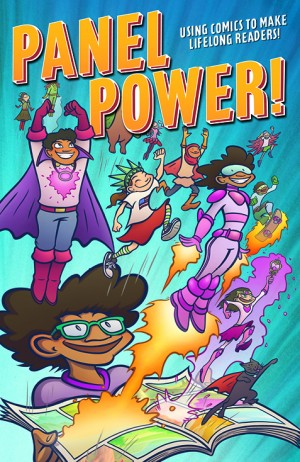 There’s a passionate blog post, with a phenomenal list of resources attached to it, that details Why Graphic Novels Belong in All of Our Libraries. The author, Pernille Ripp, talks about the struggle that many parents, teachers, and librarians will find all too familiar – getting a bright, young person to see themselves as a reader. In Ripp’s case, it’s her daughter Thea that she uses as the example, eventually breaking through with Dav Pilkey’s Dogman, sparking the love of books most readers remember discovering in their adolescence.
There’s a passionate blog post, with a phenomenal list of resources attached to it, that details Why Graphic Novels Belong in All of Our Libraries. The author, Pernille Ripp, talks about the struggle that many parents, teachers, and librarians will find all too familiar – getting a bright, young person to see themselves as a reader. In Ripp’s case, it’s her daughter Thea that she uses as the example, eventually breaking through with Dav Pilkey’s Dogman, sparking the love of books most readers remember discovering in their adolescence.
In Thea’s case it was a teacher that recognized the connection between words and pictures that would help the young girl fall in love with books. For some it’s a parent or a librarian, or even another young friend who shares whatever special book gets through the block and creates a life long love of reading. Ripp writes,
“So when I hear teacher’s tell students that graphic novels are too easy. That comic books are not real reading. That it is time to pick a “real” book. That they can read books like that for fun but not for learning, I tend to get a bit upset. You see, comics are what kept me reading long into the night as a child when books seemed like too much work. Graphic novels are what make my students who declare they hate reading actually give it a try. Dog Man and all of the other books by Dav Pilkey are what made Thea believe she was a reader. How can we just dismiss that?”
Ripp mentions the award-winning MARCH graphic memoir, Ta-Nehisi Coates Black Panther, and Hey, Kiddo by Jarrett J. Krosoczka as graphic novels that defy the notion of comics and illustrated works being “easy” or “just for fun.” When we dismiss works that engage children, we are dismissing their experience. Or as Ripp eloquently puts it,
“Because when you tell a child that the book they have chosen is too easy you may be dismissing the first book they have ever connected with.
You may be dismissing the first book they have ever actually enjoyed.
You may be dismissing the first book they have ever seen themselves in.
You may be dismissing the first book that made them finally believe that they, too, are a reader.”
Check out the full blog here. It’s a great read, and make sure to bookmark the amazing resources listed at the end. Among those are crucial CBLDF publications Panel Power and Raising a Reader, two great free publications for parents about inspiring their children to a lifelong love of reading with comics. Both combat common misconceptions about graphic novels, like how they’re “easier than real books” or “not really reading” so that parents understand their child is developing visual literacy as well as improving their reading skills.
We’d like to add for librarians a great introduction resource is one of our newest publications Comics – Start Here!. A free resource that gives an intro to comics and manga, while also discussing shelving strategies and programming ideas. In fact, if you go to https://cbldf.org/library you can read Comics – Start Here! for free, and also get a breakdown of tons of other free resources for librarians interested in utilizing comics and graphic novels in their collection. Teachers and parents should check it out too! You don’t need to have a whole library to start your own Manga Book Club, and our free Manga Book Club Handbook can help you figure out how to, and much much more.
Help support CBLDF’s important First Amendment work in 2018 by visiting the Rewards Zone, making a donation, or becoming a member of CBLDF!